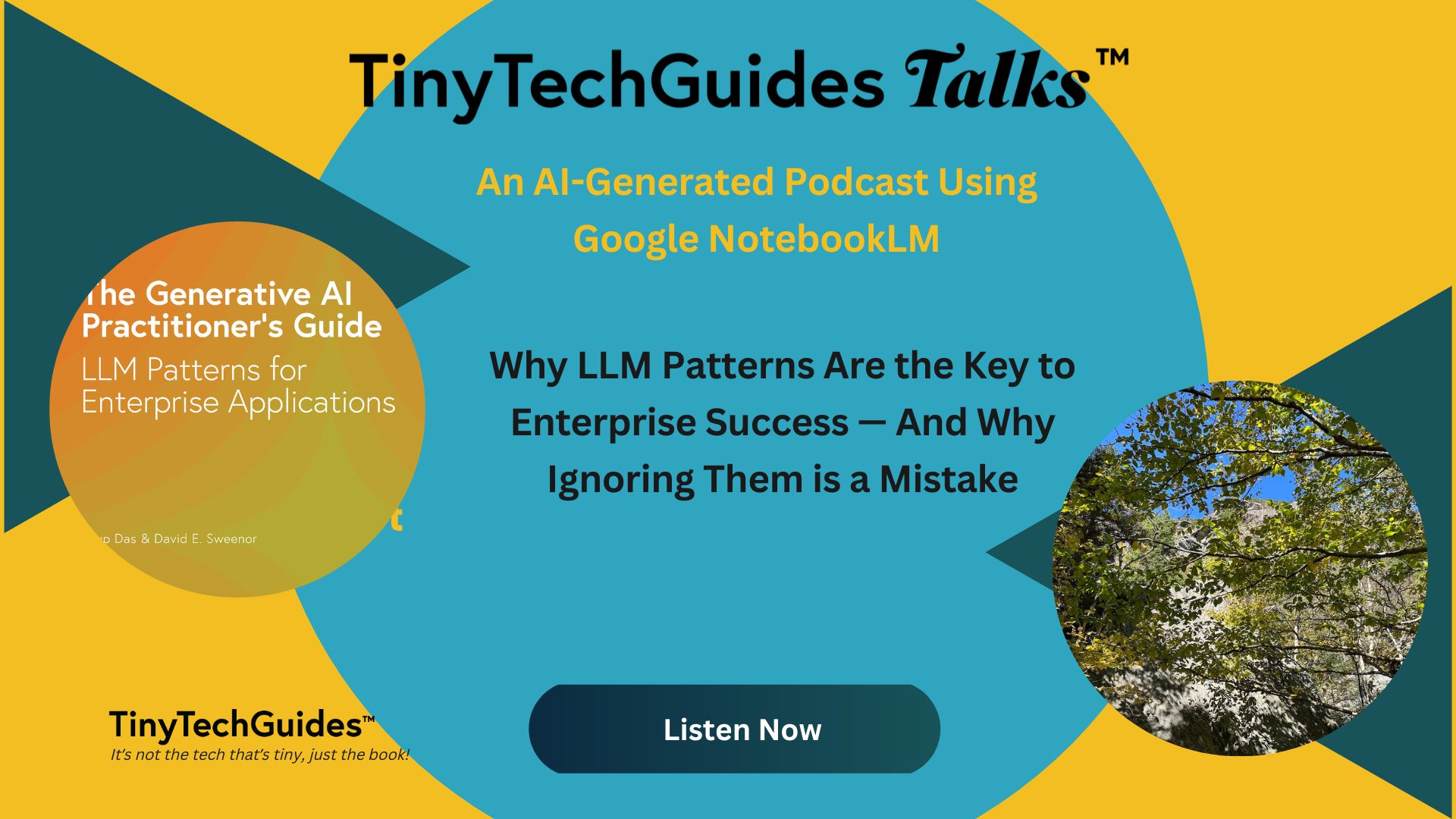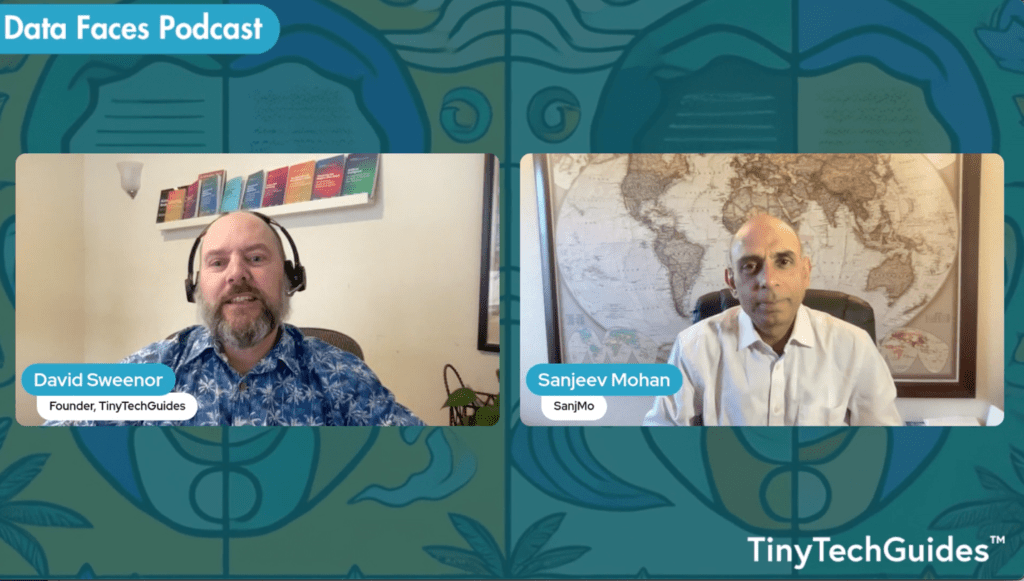As organizations begin to get serious about generative AI, they realize that moving from experiments to enterprise-scale AI systems is no easy feat. Despite AI’s promise to automate, optimize, and enhance productivity, many organizations struggle to extract real value from their investments. McKinsey estimates only 11% of companies have adopted generative AI at scale, underscoring how challenging meaningful AI integration can be.[1]
The key? LLM patterns. These frameworks ensure AI applications align with specific business needs, unlocking efficiency, better decision-making, and automation. But ignoring these patterns can lead to costly failures and missed opportunities. In this podcast, we’ll explore five essential patterns:
1. Author: Automate content creation and streamline communication.
2. Retriever: Quickly locate the right information from vast data repositories.
3. Extractor: Transform unstructured data into actionable insights.
4. Agent: Automate multi-step workflows and decision-making processes.
5. Forecast/Recommend: Predict future trends and optimize recommendations.
How This AI-Generated Podcast Came to Life
This podcast wasn’t just another recording session. After writing my article on LLM patterns, I took it a step further by using Google’s NotebookLM to transform the content into an engaging, AI-generated podcast. The process involved uploading my article and letting Google work its magic.
Ready to Learn How These Patterns Shape Business Success?
Listen to the 10-minute podcast below, where AI breaks down each AI pattern, explore real-world case studies, and highlight what happens when businesses fail to adopt these frameworks. Whether you’re in finance, healthcare, retail, or tech, these patterns offer a roadmap to AI-driven success.
AI-Generated Transcript:
AI Patterns for Enterprise Success: How to Drive Real Value from AI
Picture this: You’re pitching a new project to your boss, and the moment you mention AI, their eyes light up. “Brilliant, that’s the extractor pattern, right?” Suddenly, you’re speaking their language—AI patterns. By the end of this post, you will too.
This post dives deep into why AI patterns are the key to enterprise success—and why ignoring them is a mistake. Spoiler: It’s not just about AI hype; it’s about leveraging AI effectively.
Let’s cut through the noise. Everyone talks about AI, but this post is about using it. Imagine everyone owning a garage full of sports cars, but no one knows how to drive. These AI patterns? They’re your driving lessons. They teach you how to unlock AI’s real potential.
We’ll walk through five game-changing AI patterns:
1. Author
2. Retriever
3. Extractor
4. Agent
5. Forecast-Recommend
Let’s dive in.
1. Author Pattern: Automating Content Creation
The Author Pattern takes the grind out of creating content. Reports, emails, product descriptions—it can handle the first draft while you grab a coffee. But here’s the twist: it’s not just “set it and forget it.”
Remember that infamous Google AI suggestion to put poop emojis on balloons? Not exactly the outcome anyone wanted. AI needs clear instructions and collaboration to get the best results.
Real-world example? Goldman Sachs uses AI for code generation—not just drafting emails, but writing functional code. That’s next-level stuff.
2. Retriever Pattern: Finding the Needle in the Haystack
How much time do you spend searching for the right file? Now multiply that across an entire organization. The Retriever Pattern serves as an AI-powered research assistant that pulls relevant information from vast datasets in an instant.
But it has limits: If your data isn’t well-organized, AI won’t work miracles. The US Department of Veterans Affairs uses this pattern to build an AI-powered cardiac surgery coach—where finding the right insights is literally a matter of life and death.
3. Extractor Pattern: Understanding the Messy Data
Sometimes, it’s not about finding one thing—it’s about making sense of everything. The Extractor Pattern analyzes unstructured data: emails, social media posts, customer reviews, and more.
Think of it like sorting through an attic full of antiques, figuring out what’s valuable. Zurich Insurance uses this pattern to analyze claims and identify fraud, saving millions. That’s turning data from a liability into a competitive advantage.
4. Agent Pattern: Automating Workflows
This is where AI starts feeling like magic. The Agent Pattern automates complex, multi-step workflows. Imagine an AI that not only schedules your meetings but drafts the agenda, collects the relevant documents, and sends follow-up emails.
Walmart exemplifies this, deploying an AI tool that supports 50,000 employees, from scheduling to performance reviews. That’s not a pilot program—it’s enterprise AI in action.
But AI agents aren’t fully autonomous. They need workflows and parameters—and still know when to involve humans. It’s about freeing us up, not replacing us.
5. Forecast-Recommend Pattern: Seeing the Future
The Forecast-Recommend Pattern is AI’s crystal ball, using data to predict outcomes and make recommendations. Think of it as the difference between guessing and anticipating market trends.
However, the magic only works with high-quality data. Garbage in, garbage out. Estee Lauder demonstrates the power of this pattern by predicting customer preferences, delivering personalized product recommendations at scale.
Combining Patterns: The Lego Bricks of AI
These patterns don’t work in isolation—they build on each other. Think of them like Lego pieces: each has value on its own, but combined, they can create truly powerful solutions.
Ignore at Your Own Risk
What happens to companies that don’t embrace these AI patterns? They get left behind. Sticking with old methods in an AI-driven world is like insisting on riding horses when everyone else has cars.
This isn’t about the future—it’s happening now. Companies that use these patterns are leapfrogging the competition. Ignoring them means falling behind.
A Call to Action
Knowing these patterns isn’t enough. You have to use them. These patterns apply to every industry—healthcare, finance, retail—not just tech. It’s not just talk anymore. The playbook is here—now it’s time to act.
So, let’s end with a question:
Which industries are most at risk if they don’t adopt these patterns?
Let us know in the comments below. And don’t forget—this is just a taste. If you want to dive deeper, check out the full blog post (link in the notes).
Until next time, keep exploring, keep learning, and keep pushing forward.
[1] Baig, Aamer, Douglas Merrill, Megha Sinha, Danesha Mead, and Stephen Xu. 2024. “How CIOs can scale gen AI.” McKinsey & Company. https://www.mckinsey.com/capabilities/mckinsey-digital/our-insights/moving-past-gen-ais-honeymoon-phase-seven-hard-truths-for-cios-to-get-from-pilot-to-scale.



